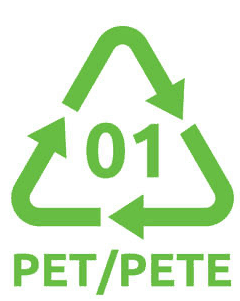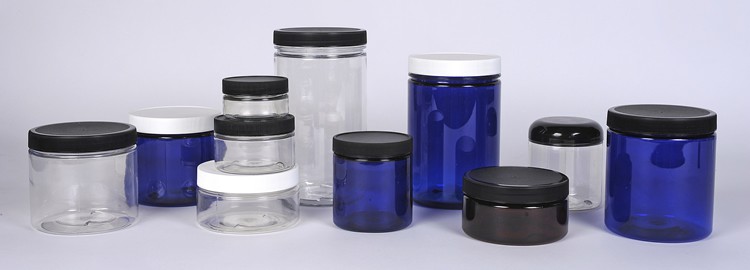
What is PET Plastic? Recycle symbol 1.
What does PET mean?
PET is short for the chemical name polyethylene terephthalate.
Common Abbreviations
Most of our PET Bottles and Jars are manufactured from PETE, however other types of PET resin include PETG, APET, PETP or PET-P.
PET Plastic Uses
PET can be used for many applications. PET resin is strong and clear but can be easily colored. It is somewhat flexible but strong and lightweight, making it easy to shape.
PET is frequently used for water bottles, shampoo containers, soda bottles, and plastic cups. Polyester fabric is made from PET. Customers use PET because it promotes high product visibility. PET Plastic bottles and jars reduce breakage, are shatterproof for safety and allow for easy shelf stacking.
At Porter Bottle Company, we carry a wide variety of PET Plastic Bottles and Jars.
Can you Recycle PET Plastic?
Yes PET can be recycled! PET is the most frequently recycled plastic. It can be simply washed and melted for uses in products, or purified and re-polymerized to make new food-grade PET bottles and jars. We encourage you to recycle your PET containers and pass the word on to your customers too! PET Plastic can be identified at the bottom of most containers with the number 1 between the continuous recycle symbols.

Is PET Safe?
There has been a great deal of confusion about the safety of PET, especially following concerns raised about the safety of a different kind of plastic, containing bisphenol A (BPA) a container formerly used to manufacture reusable rigid containers and electronic devices. There is no connection between PET plastic and BPA. BPA is not used in the production of PET Plastic.
PET Science
PETRA, the PET Resin Association states:
Understanding the chemistry of PET explains why it is globally recognized as safe, and so widely used for food, beverage, pharmaceutical and medical applications
PET is short for polyethylene terephthalate – the chemical name for polyester. PET is made by combining ethylene glycol and terephthalic acid under high temperature and low vacuum pressure to form a polymer chain. The resulting polyester polymer is extremely stable, tough and essentially inert. PET is highly resistant to chemical or biological reaction with other substances. This non-reactive quality is at the heart of PET’s safety.
Although PET bottles are virtually synonymous with convenience-sized soda and water bottles sold in the U.S., many different types of plastics are used for packaging foods and beverage. The names and acronyms for many of these plastics may seem similar, but they have very different properties and chemical structures.
PET is a polymer chain composed of molecules of Polyethylene Terephthalate. 1 molecule of PET Plastic has Chemical Formula: (C10H8O4)


